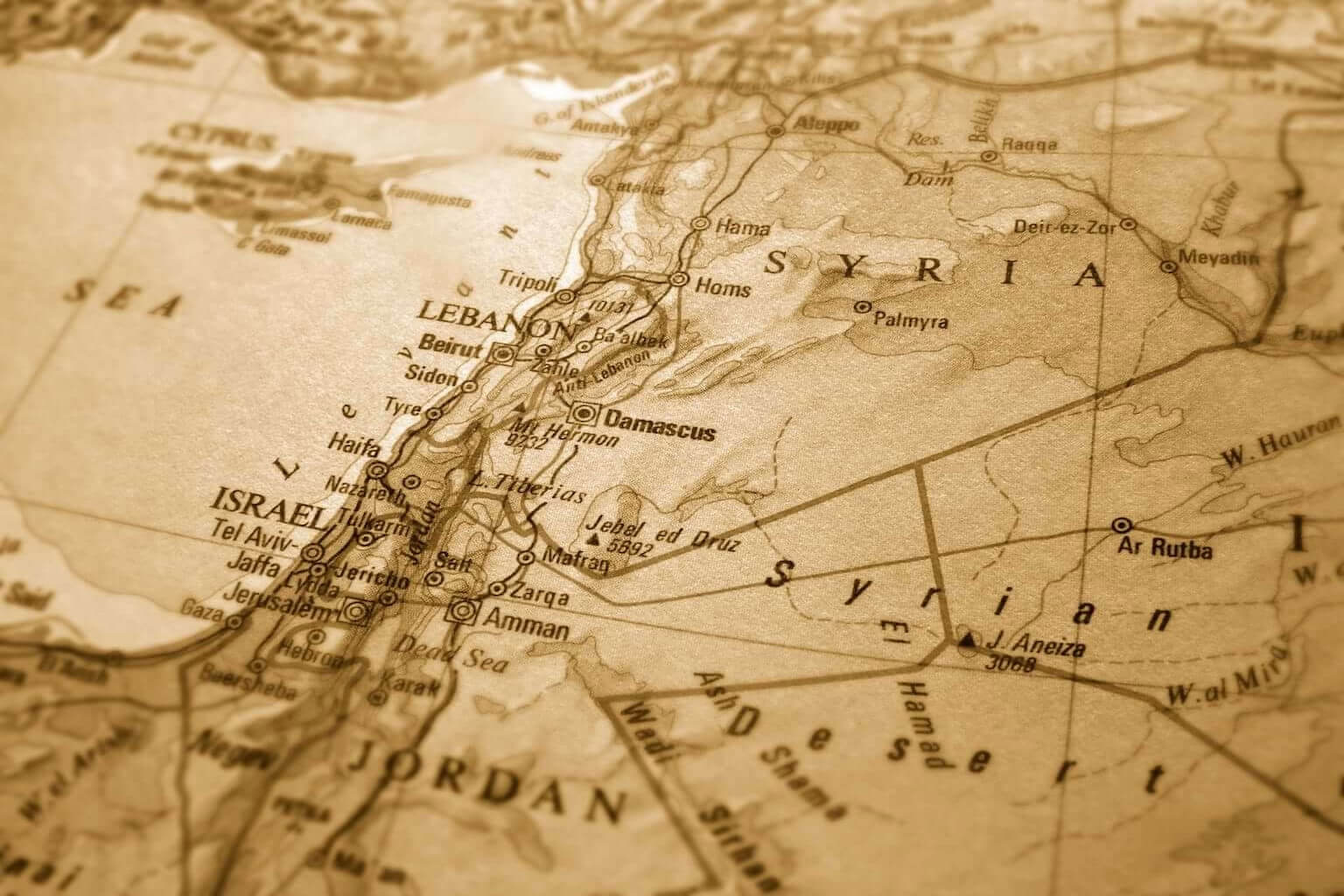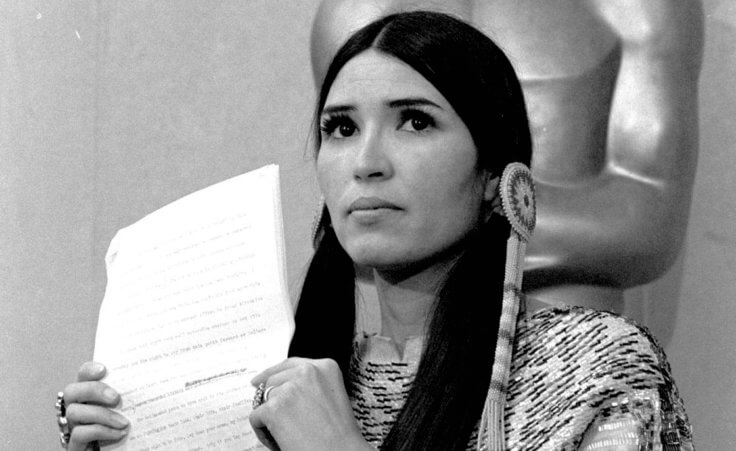
A map of Israel depicting Israel, Syria, Lebanon, and Jordan. By Sean Gladwell/stock.adobe.com
We typically call Israel the “Holy Land,” and for good reason. To walk where Jesus walked; to study Scripture at the synagogue location where he taught; to travel on the Sea of Galilee where he walked its waters; to hear the Sermon on the Mount where he first preached it; to go to Golgotha and step from his empty tomb—these are indeed holy experiences. But how did the land become “holy”? And how can a brief history of Israel help us know and serve the One who is Lord of all history?
NOTE: This resource article belongs to a series regarding the foundational issues behind the ongoing war between Israel and Hamas. The full series is also available as a free ebook.
History is “his story”
We begin with a brief history of Israel, the Holy Land. No place on earth has a longer, more spiritually significant narrative to tell.
The story of an ancient land
The area of Israel is a very narrow land bridge between the gigantic continents of Africa and Asia. People from the north and the south have moved back and forth across it continuously. As a result, human history in the land extends over half a million years and is more complicated than that of any other region on earth. Here’s a very rough outline of the history of Israel.
The Stone Age (1,400,000–4500 BC)
The oldest human skeleton found in Palestine is dated to 1.4 million years ago. People lived by the shores of rivers and lakes in the region and lived by hunting with flint tools the large game roaming the area. Evidence of fire first appeared around 200,000 BC. The major revolution of the era occurred between 10,000 and 8000 BC when the economy shifted from food-gathering to food-producing. As people learned to domesticate animals and produce grain, they moved from camps to villages and from stone to pottery.
The Copper and Bronze Ages (4500–1200 BC)
Trade grew and villages prospered. The potter’s wheel was introduced, and copper was combined with tin to produce a much harder metal, bronze. Empires in Egypt and Mesopotamia grew strong, and eventually Egyptian pharaohs assumed control of the coastal plain of Palestine. Just then Abraham and his tribe migrated south and west into the area (ca. 2000 BC), and from there to Egypt. Eventually, Moses and Joshua led the Jewish people from Egyptian slavery back to this promised land (ca. 1250 BC). Meanwhile, the Sea Peoples (Philistia) were migrating into the coastal plains along the Mediterranean Sea.
The Iron Age (1200–586 BC)
The Philistines and the Canaanites developed the use of iron and chariots, making life difficult for the Jewish newcomers from Egypt. As a result, the Israelites abandoned their loose tribal system for a centralized monarchy. Their first king, Saul, helped them defeat the Philistine armies and establish the security of the nation. Then David (1004–965 BC) made the nation strong, conquering Jebus and making it into the capital city of Jerusalem and defeating the enemies of the people on every side.
His son Solomon (965–928 BC) built the first temple in Jerusalem, acquired riches on a scale unprecedented in the ancient world, and ruled the united kingdom with great wisdom. However, upon his death, the ten northern tribes revolted against his son Rehoboam and established the nation of “Israel”; the two southern tribes (Judah and Benjamin) remained loyal to the house of Solomon and became the nation of “Judah.”
In time, the sins of these two nations led to their downfall and judgment at the hand of the God who created them. The Assyrians captured the ten northern tribes of Israel in 722 BC, deported them, and absorbed them into Assyrian culture. They are often called the “ten lost tribes” of Israel. The Babylonians in time defeated the Assyrians and then took the southern tribes of Judah captive in 586 BC. For seventy years, the Jewish people were slaves in Babylon until the Persians defeated the Babylonians under Cyrus the Great and liberated them.
The Persian period (538–332 BC)
In 538 BC, Cyrus sent the Jewish people home. They rebuilt Jerusalem under the leadership of Nehemiah, and their temple as well. Relative peace ensued until the Greeks came.
The Greek period and independence (332–63 BC)
In 331 BC, Alexander the Great destroyed the Persian Empire on his way to conquering the known world. When Alexander died in 323 BC, his generals carved up his Greek Empire. A general named Seleucid claimed Syria and Babylon, Ptolemy claimed Egypt, and the two fought over Israel.
Around 200 BC, the Seleucids won the land back from the Ptolemies but ruled the Jewish people with intense insensitivity to their faith. In 167 BC, three Maccabean brothers led a revolt. In time the Jewish people gained their independence and land, which included almost exactly the same borders they had enjoyed during the reigns of David and Solomon.
However, this freedom was short-lived. In 63 BC, amidst divided Jewish leaders and cultural chaos, the Romans stepped in.
The Roman Era (63 BC–AD 640)
Rome ruled the land through kings and procurators they appointed. The Jewish people revolted against them in AD 66, seizing the fortress palace of Masada to the south of Jerusalem; Titus then destroyed Jerusalem in AD 70 and eventually recaptured Masada in AD 73.
After a second revolt (AD 132–5), the Jewish people were excluded from Jerusalem and even Judea. Many were sold into slavery and transported to Egypt. Jewish settlements were not rebuilt and Jerusalem was turned into a pagan city. The Romans renamed the area Palestina Syria; “Palestina” is a Latin version of “Philistines,” the sea peoples who populated the Mediterranean coast. From that point to the reestablishment of the State of Israel in 1948, the area was commonly known as “Palestine.”
The Roman Empire changed its capital to the Greek city of Byzantium around AD 300, ushering in the Byzantine Period (AD 324–640). Rome continued to rule Palestine; Constantine and his followers built churches and holy places by the hundreds in what was now called the Holy Land; and Jerusalem grew until it regained its former size and significance.
However, the Muslim invasion would change everything.













